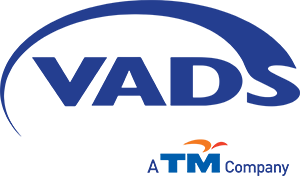Newsroom
- VADS
- Newsroom
- Know the Difference between Call Center and Contact Center
Know the Difference between Call Center and Contact Center
15 October 2021

The call center is a department that serves incoming and outgoing customer calls. Call center agents to become customer service representatives who handle customer inquiries. It usually also provides other services such as remote marketing, billing, and other customer-related functions. Call center operations can be in-house or outsourced to vendors or external partners who are experts in their fields.
Meanwhile, the contact center is a department that handles incoming and outgoing customer interactions. Like call center services, contact centers operate within the organization or can be outsourced to partners. However, the difference is that contact center agents interact with customers through various channels, such as messages, telephone, applications, text, email, social media, and the web.
Communication channel used
Historically, a call center was a service designed to serve as many customers as possible in the shortest time possible through a single channel, namely voice calls. In many cases, customers call the business the last resort. In contrast, contact centers are designed with the understanding that customers expect fast responses, personalized interactions, and timely results from the channel of their choice. So, the main difference between the two lies in the customer service channel used.
However, adding more channels to a call center does not make it a contact center. The contact center is the central point for managing all customer contacts. This requires coordination and integration of human resources (HR), processes, and technology across the business. Contact center agents, for example, need to be trained on the best practices of each channel to increase customer engagement.
Information about problems facing customers
The call center is a customer service that focuses on answering incoming requests as the only means of communicating with customers. This makes the call center only able to collect various information about the problems faced by customers based on incoming calls that are not necessarily comprehensive.
On the other hand, the contact center is more integrated with the help of software and history from various channels. This factor allows agents to maximally know the specific problems or complaints of each customer so that they can solve problems easily.
Implementation of self-service procedures
Most call centers and contact centers use automation through Interactive Voice Response (IVR). IVR is a feature of an automated business phone system that interacts with callers and gathers information by giving them choices via menus. IVR performs actions based on the caller's response via a telephone keypad or voice response.
Both use IVR, the difference is that the call center has an IVR design that tends to be complicated so that customers cannot easily talk to agents directly. Meanwhile, contact centers design IVR with brands and customers in mind which helps predict caller intent and directs it to the best agent. Sometimes, the needs of the caller can also be resolved without human contact.
Implementation of self-service procedures is also provided at the contact center via keyword-based two-way text messages or by chatbots. Regardless of the method used, the implementation of this self-service procedure serves to reduce the time agents spend on the phone thereby minimizing costs and waiting time.
Access to customer profile data
Both contact centers and call centers are services that can track customer profile data collected from each time a customer contacts your business. However, the digital channels used by the contact center make it much simpler, not to mention the software used can collect all customer data from all channels into one customer display.
All that customer profile data is used by businesses to offer predictive services or suggest new products.
Compared to call centers, contact centers generate more data thanks to the use of multiple channels. Your business can provide outstanding service during interactions with customers because various customer data are available every time a customer connects to the company's contact center.
Easy routing to the right agent
The last difference between a call center and a contact center is the ease of routing to the right agent. Directing customers to the most appropriate agent is done by utilizing various customer information obtained from each channel.
Call centers can actually direct customers to the most appropriate agent, but contact centers are easier to do this routing because of the use of software that pulls data from various channels, making it easier for the contact center to predict the destination of calls, texts, webchats, and so on.
All customers don't want to spend extra time explaining their problem, so it's important for your business to make sure the customer is connected to the right agent for faster troubleshooting. In this case, the contact center is superior because its software allows business routes to be faster and more accurate.
By now, you have learned that a call center is a department that handles incoming and outgoing customer calls, while a contact center is a department that handles incoming and outgoing customer interactions through multiple channels. Both are equally important to support your business's customer service. To make it more optimal, equip your contact center agent with customer service support software such as those made by VADS Indonesia.
Related News
30 June 2025
20 June 2025
19 June 2025
27 May 2025
02 May 2025
17 April 2025
14 March 2025
07 March 2025
28 February 2025
18 February 2025
14 February 2025
11 February 2025
07 February 2025
28 January 2025
24 January 2025
21 January 2025
14 January 2025
07 January 2025
02 January 2025
30 December 2024
27 December 2024
17 December 2024
13 December 2024
10 December 2024
06 December 2024
03 December 2024
29 November 2024
19 November 2024
14 November 2024
08 November 2024
05 November 2024
01 November 2024
31 October 2024
25 October 2024
22 October 2024
18 October 2024
16 October 2024
11 October 2024
09 October 2024
08 October 2024
07 October 2024
27 September 2024
24 September 2024
20 September 2024
13 September 2024
10 September 2024
10 September 2024
06 September 2024
04 September 2024
02 September 2024
02 September 2024
09 August 2024
05 August 2024
26 July 2024
23 July 2024
02 July 2024
25 June 2024
18 June 2024
14 June 2024
06 June 2024
31 May 2024
24 May 2024
26 April 2024
02 April 2024
08 March 2024
05 March 2024
01 March 2024
29 February 2024
27 February 2024
23 February 2024
20 February 2024
16 February 2024
13 February 2024
09 February 2024
06 February 2024
02 February 2024
30 January 2024
26 January 2024
23 January 2024
19 January 2024
17 January 2024
12 January 2024
09 January 2024
05 January 2024
04 January 2024
29 December 2023
26 December 2023
20 December 2023
13 December 2023
08 December 2023
05 December 2023
28 November 2023
23 November 2023
17 November 2023
14 November 2023
09 November 2023
08 November 2023
01 November 2023
24 October 2023
17 October 2023
17 October 2023
11 October 2023
10 October 2023
06 October 2023
04 October 2023
29 September 2023
27 September 2023
26 September 2023
22 September 2023
21 September 2023
15 September 2023
08 September 2023
01 September 2023
22 August 2023
18 August 2023
15 August 2023
15 August 2023
04 August 2023
26 July 2023
21 July 2023
04 July 2023
03 July 2023
30 June 2023
09 June 2023
01 June 2023
30 May 2023
26 May 2023
19 May 2023
17 May 2023
12 May 2023
04 April 2023
16 March 2023
09 March 2023
24 February 2023
22 February 2023
14 February 2023
13 February 2023
09 February 2023
31 January 2023
26 January 2023
23 January 2023
19 January 2023
12 January 2023
10 January 2023
06 December 2022
31 August 2022
17 June 2022
09 May 2022
20 April 2022
06 April 2022
01 April 2022
25 February 2022
23 February 2022
21 February 2022
18 February 2022
15 February 2022
11 February 2022
08 February 2022
07 February 2022
04 February 2022
02 February 2022
31 January 2022
17 January 2022
14 January 2022
07 January 2022
03 January 2022
28 December 2021
07 December 2021
01 November 2021
27 October 2021
25 October 2021
18 October 2021
14 October 2021
21 September 2021
22 April 2021
15 April 2021
13 April 2021
08 April 2021
05 April 2021
26 March 2021
23 March 2021
18 March 2021
15 March 2021
12 March 2021
09 March 2021
04 March 2021
02 March 2021
26 February 2021
23 February 2021
19 February 2021
16 February 2021
11 February 2021
09 February 2021
04 February 2021
02 February 2021
26 January 2021
21 January 2021
19 January 2021
14 January 2021
12 January 2021
07 January 2021
05 January 2021
29 December 2020
17 December 2020
15 December 2020
10 December 2020
08 December 2020
04 December 2020
02 December 2020
18 November 2020
16 November 2020
13 November 2020
11 November 2020
10 November 2020
09 November 2020
06 November 2020
04 November 2020
28 October 2020
23 October 2020
12 October 2020
09 October 2020
06 October 2020
02 October 2020
30 September 2020
23 September 2020
19 September 2020
26 August 2020
22 July 2020
23 April 2020
16 April 2020
09 April 2020
26 March 2020
19 March 2020
12 March 2020
05 March 2020
27 February 2020
20 February 2020
13 February 2020
06 February 2020
